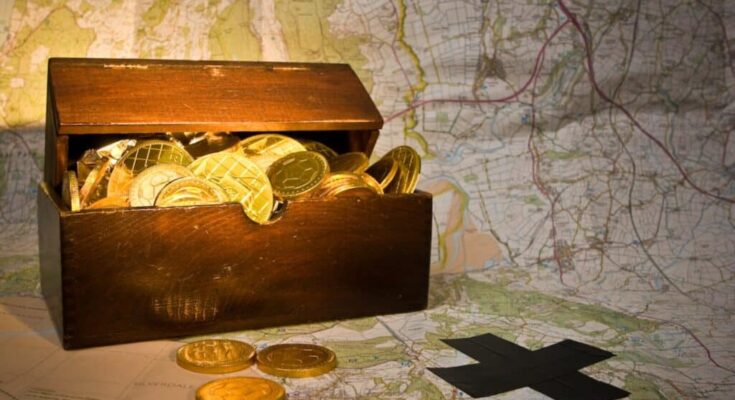
A three-week treasure hunt for a small golden trophy hidden in the woods of New England is also handing out a reward of over $25,000.
Tom Bailey and Jason Rohrer, the creators of Project Skydrop, have made a small trophy containing ten troy ounces of 24-karat gold. Jason Rohrer is a video game designer from New Hampshire, and Bailey is a musician.
“Part of the goal here, as a game designer, was to get away from the traditional scavenger hunt, treasure hunt, which is based on riddles,” said Rohrer. “There’s this increasing tension and drama that keeps growing over time and keeps people engaged. It’s just this new kind of structure for this whole thing, and we’re hoping to make the greatest treasure hunt of all time.”
Each contestant pays a $20 entry fee to participate in the hunt, half of which goes into the pot. Several thousand people have already joined, and many more might still participate before the hunt is over, which means the pot grows significantly more with each passing day.
The trophy is worth about $27,000 and contains clues to a BitCoin account. The BitCoin account’s value is ever-increasing as it includes the pot from the entrance fee plus a little more and is about $30,000 in value.
“It is a real-world adventure,” said Bailey.
The treasure hunt
Bailey and Rohrer decided to start the contest by giving contestants a search diameter of 500 miles. The search diameter gets smaller daily, reaching 95 miles wide on Friday, spanning the borders of Connecticut, Massachusetts, and New York. The treasure hunt will last until October 10th, when the diameter will be just a foot wide.
The contestants also receive daily emails containing clues to the whereabouts of the golden trophy. The idea is to make a challenging treasure hunt that doesn’t drag out too long or discourage hunters from pursuing the prize. At the same time, the creators don’t want to make it too easy, so they want to strike a balance.
“We are really trying to control the dramatic arc,” said Rohrer. “A lot of these treasure hunts either go on for way too long and no one ever solves it, or gets solved and broken by someone right away, which spoils the whole thing.”
The goal for Bailey and Rohrer is to get people away from their phones and out into the world.
“We are just trying to get people out, out from behind their screens and into the world,” Rohrer said. “Every time we go hiking or out to do something outside, we never regret it, so [we’re] just trying to bring that experience to people who might not get it otherwise.”



